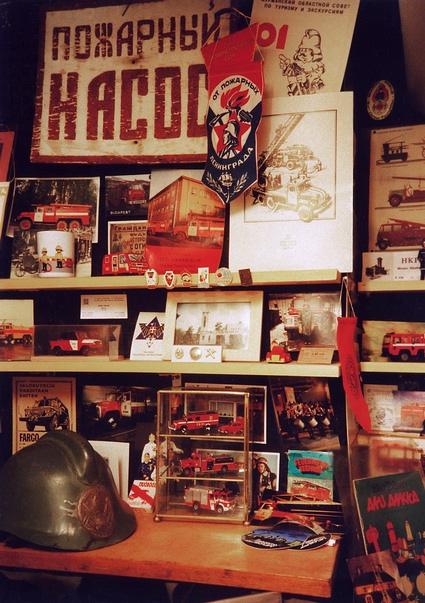 Details of the installation: “Fire & Rescue Museum”, 2009 (Photo: Jussi Kivi)
Details of the installation: “Fire & Rescue Museum”, 2009 (Photo: Jussi Kivi)
The Finnish pavilion might be smaller than most -barely the size of a container- but its location and quirkiness makes it one of my favourite in the Giardini of the Biennale. It was designed by Alvar Aalto in 1956 as a demountable wooden structure to be packed up after each Biennale. However, the wrong bolts and fasteners were shipped with it and it couldn’t be dismantled. Since the city bans buildings made of wood, the fire marshals had to bend the rule. The temporary pavilion is still standing in the Giardini.
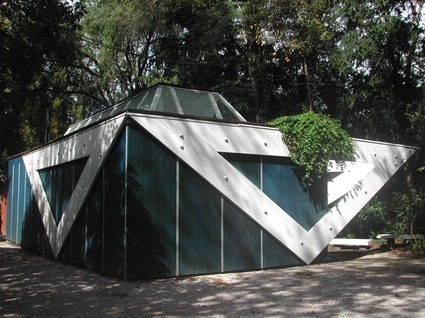 The Aalto Pavilion in 2007. Photo by Kaisa Hein‰nen
The Aalto Pavilion in 2007. Photo by Kaisa Hein‰nen
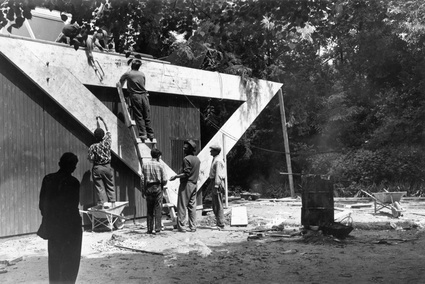 Building of the pavilion in 1956. Courtesy of Museum of Finnish Architecture (Suomen rakennustaiteen museo)
Building of the pavilion in 1956. Courtesy of Museum of Finnish Architecture (Suomen rakennustaiteen museo)
Fifty years later, firemen are entering the Finnish pavilion. Visual artist Jussi Kivi has turned the whole pavilion into a very personal “Fire & Rescue Museum”. You can find all sorts of knickknacks and memorabilia he has been collecting since he was a kid: vintage extinguishers, gas masks and helmets, scale models, postcards, posters, technical firefighting literature, personal drawings, figurines and toys, boardgames and souvenirs.
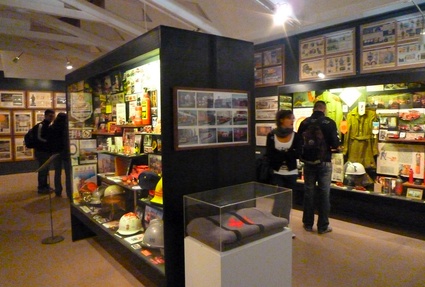
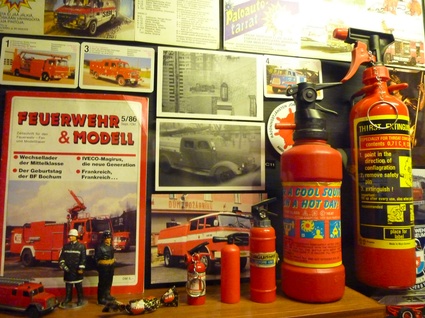
Kivi ‘s collection gained gravitas and a new significance last year when the artist discovered the content of an abandoned Soviet underground nuclear bomb shelter in eastern Estonia. Scattered on the walls and floors were partly moldy Soviet information boards and posters presenting civil defense and fire fighting procedures before and after a nuclear fallout.
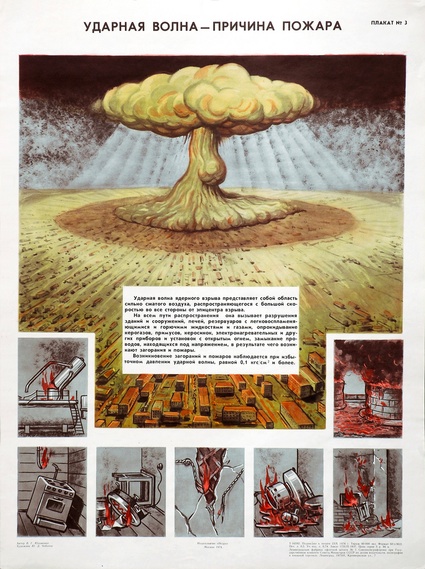 Jussi Kivi: Soviet poster from the series “Civil defense & Fire service, poster nr. 3”, detail of the installation: “Fire & Rescue Museum”, 2009 (photo: Filippo Zambon)
Jussi Kivi: Soviet poster from the series “Civil defense & Fire service, poster nr. 3”, detail of the installation: “Fire & Rescue Museum”, 2009 (photo: Filippo Zambon)
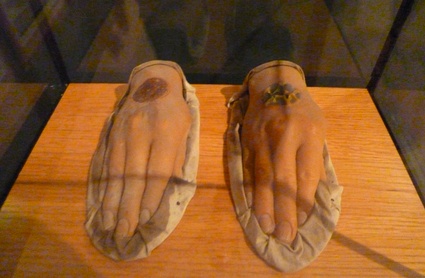 Contaminated hands, an educational model from the Soviet era illustrating the symptoms of chemical weapons on skin. Discovered in an Estonian bunker in 2008
Contaminated hands, an educational model from the Soviet era illustrating the symptoms of chemical weapons on skin. Discovered in an Estonian bunker in 2008
Kivi’s childhood adoration for rescuers takes a darker meaning when confronted with propaganda material that warns of the threat of an attack with weapons of mass destruction.
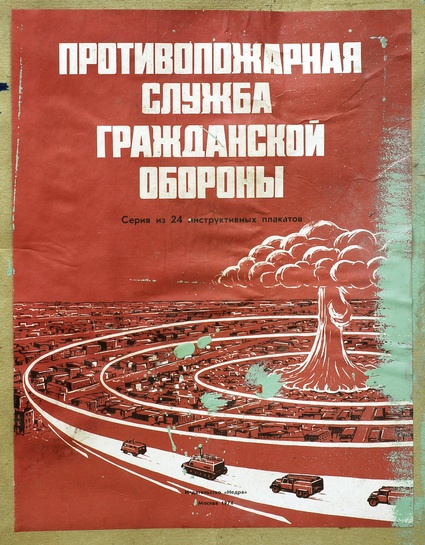 Fire & Rescue Museum, 2009, detail of installation (photo: Filippo Zambon)
Fire & Rescue Museum, 2009, detail of installation (photo: Filippo Zambon)
The project’s precarious position between the artist’s personal need for order and safety and the disorder and chaos of the surrounding reality presents in miniature the situation we are facing in the world at large. In the safety provided by the walls of the small wooden pavilion in Giardini, designed in the period of reconstruction after WW2 by Alvar Aalto, Fire & Rescue Museum reminds both of the need of caring and the need of forecasting. If the preconditions of life at a time of world-wide environmental deterioration and widespread poverty are neglected, any rescue plans toward threats of future conflicts stand helpless.
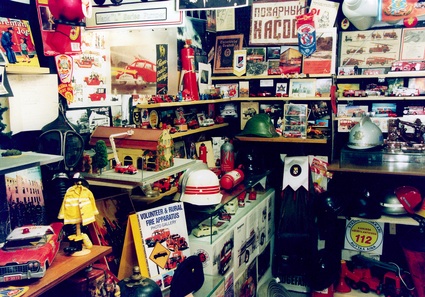 Details of the installation: “Fire & Rescue Museum”, 2009 (Photo: Jussi Kivi)
Details of the installation: “Fire & Rescue Museum”, 2009 (Photo: Jussi Kivi)
The Venice Art Biennale runs until the 22nd of November 2009.
Other artists who collect: Fabiola by Francis Alÿs, Parrworld. The Collection of Martin Parr (Part 1) and Parrworld. The Collection of Martin Parr (Part 2).
